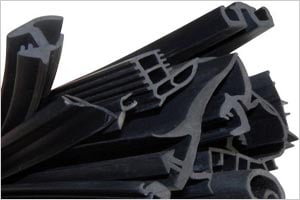Rubber Vulcanization
Natural rubber has some serious defects; it is weak, easily becomes sticky and is not very elastic. To improve the physical properties (strength and heat resistance) of the material, it is taken through a vulcanization process, in which the polymeric chains of rubber undergo a crosslinking reaction, initiated by the addition of sulphur to form a stable 3D network . This reaction occurs at room temperature, but very slowly. To increase the rate of the chemical reaction, heat is applied. Many products in a vast range of industrial sectors, including Automotive (e.g., door seals and windshield wipers) need to be thermally treated to undergo vulcanization to maximize product performance. Vulcanization can be perfomed using either batch or continuous oven technology.
- At a Glance
- Featured Solutions
- Resources
To guarantee successful vulcanization of rubber, it is essential to measure temperature within the core of the rubber product to ensure that the correct 'time at temperature' was achieved. Correct 'time at temperature' allows the cross-linking vulcanization reaction to reach completion.
- Confirm that the cross-linking vulcanization process is complete to gurantee product performance and minimize risk of rejects or final product failure
- Measure core temperatures for different-sized products at different depths to guarantee product uniformity
- Prevent overheating of the rubber and eliminate product degradation and creation of toxic by-products (Hydrogen Sulphide)
- Create fully certified profile traces to validate product quality to customers in the automotive sector, who require high level regulatory compliance (ISO9000 etc.)
 Thermal Profiling Systems
Thermal Profiling Systems Thermal Profiling Systems
Thermal Profiling SystemsGet more information about Fluke Process Instruments solutions for this application


